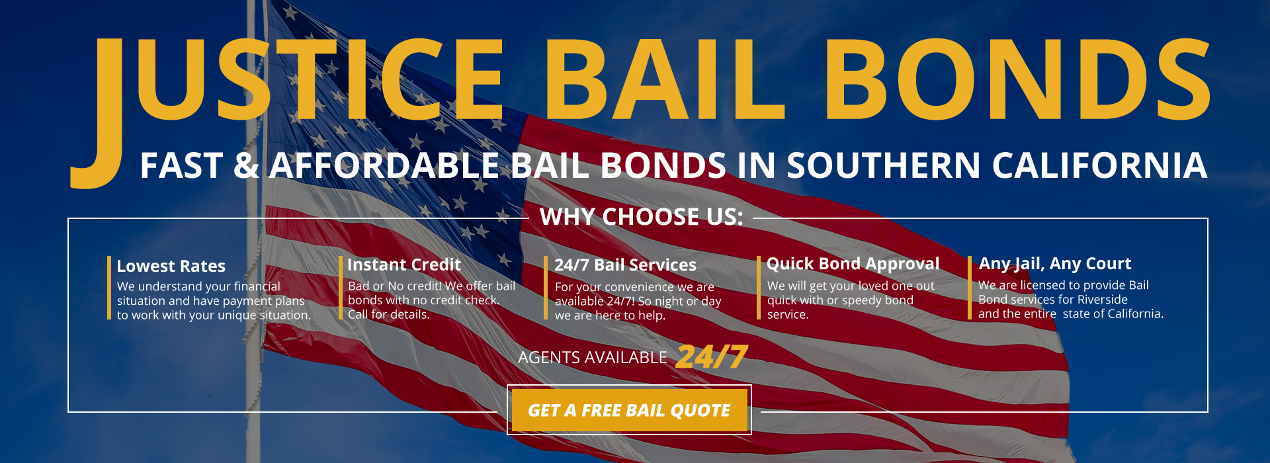Bail is an amount you pay the court for a release with a pending case. A judge considers different factors of your case when setting your bail. Courts accept bail in cash, property, or bail bonds. Regardless of the type of bail you choose, you must post it before securing the release.
In California, you can post your bail or that of a loved one using a tax refund. A tax refund reimburses excess tax paid or tax error for a given period. You could use the tax refund money to cover the entire bail amount or pay the bail bond premium.
If a defendant fails to appear in court for trial, you can lose your tax refund money in a forfeiture. Therefore, you must consider your financial situation before using the tax refund money for bail. Using the refund money for a bail bond can ensure a lower financial burden and lower risk. Hiring a reliable bail bonds company ensures a smooth bail process.
Tax Refund as a Financial Resource for Bail
Posting bail is a critical step in the criminal justice system. When you pay bail after an arrest, you can move on with your life and return to work while your case pends. The courts require you to devise the bail money before securing a release. One of the ways you can post bail for yourself to a loved one is by using your tax refund.
A tax refund, particularly from the federal government or the state of California, can be a vital financial resource for individuals who need to pay for bail. It is essential to understand how tax refunds work and how they might be used for this purpose.
What is a Tax Refund?
A tax refund is money returned to taxpayers who have overpaid their taxes through withholding or estimated tax payments. In California, individuals file their state income tax returns with the Franchise Tax Board, while taxpayers file returns with the Internal Revenue Service (IRS) at the federal level.
Most individuals in California are eligible for a tax refund if they have overpaid their state or federal taxes during the year. The amount of the refund depends on various factors. They include:
- Taxpayer’s income
- Deductions
- Credits,
- The amount of tax already paid
Taxpayers expecting a refund may use that money in various ways, including covering personal expenses, paying bills, or paying bail. An arrest presents significant financial challenges for a dentist and their family. Therefore, a tax refund can lower the financial burden by helping you secure the release.
Timing is essential for individuals hoping to use their tax refund money for bail. Depending on the method of filing, the process of receiving a tax refund can take several weeks or even months. Taxpayers who file electronically and choose direct deposit typically receive refunds faster than those who opt for a check.
- E-Filed Returns. If you file taxes online and choose direct deposit, you may receive your refund within 1-3 weeks.
- Paper Returns: Taxpayers who file paper returns and request a physical check may face a longer wait time, typically 6-8 weeks.
Posting bail is urgent since want your loved one to stay out of jail. Therefore, you must plan and ensure that the timing of your tax refund aligns with the need for bail.
If the tax return contains discrepancies or issues, the FTB may delay the refund. Sometimes, the FTB may audit the return or adjust the amount, leading to a revised refund.
Process of Posting Bail Using Tax Refund
Securing a fast release from jail is critical in ensuring the defendant goes home and moves on with their life while their criminal case ends. Receiving your tax feed when you need money for bail saves you from the financially demanding bail process. The following are steps you can go through when using your tax refund in bail:
Understand the Bail Requirements
You can post bail for yourself or a loved one using a tax refund. Before deciding to use the refund for bond, you must determine the amount of bail the court needs. A judge sets bail for a defendant at their first arraignment. The judge will consider the following factors when setting bail:
- The severity of the crimes
- Defendant's flight risk
- Bail schedules
- Income and resources
The first step in using a tax refund to pay bail is determining the entire amount needed. Learning the amount of bail required will help you determine how to proceed. If you have a significant tax refund, you could use it for cash bail. However, if the refund is minimal, you can take a portion of it to pay for the bond.
Confirm your Tax Refund Status
Before relying on your tax refund to cover bail, you must ensure the refund has been processed and deposited into your account. You can check the status of your tax refund by visiting the IRS website or the California Franchise Tax Board. Ensure you have access to the full refund before using it for bail.
Post Bail Using the Refund
When your tax refund is available, you could use the funds to pay your bail in the following ways:
-
Cash Bail
If the entire refund is available in your bank account, you can withdraw the funds and use them to pay cash bail at the jail or court. This process typically involves visiting the jail or courthouse where the bail is posted, presenting the cash, and filling out necessary forms.
Posting the entire bail amount ensures a quick and convenient release. The court releases the defendant after posting the money with the court clerk. A downside of using your refund to pay the entire bail is the risk of losing the money. If a defendant fails to follow the court conditions, you can lose the money in a forfeiture.
-
Bail Bonds
You can seek bail bond services if your tax refund does not cover the bail. Posting bail bonds involves contacting a surety company and requesting financial assistance. You must provide the bondsman with the necessary funds and a 10% fee to secure the release.
The bondsman will then post the entire bail amount on your behalf. You cannot recover the money if you use your tax refund to post a bail bond.
Additional Considerations when Posting Bail Bonds using a Tax Refund
Posting bail using a tax refund is not a straightforward process. Even after following the proper steps, you must consider the following factors:
Personal Identification
Bail is a formal agreement. Therefore, you will need to provide identification to enter the agreement. The forms of identification that the bail bond company can accept include a driver’s license, Social Security number, or other government-issued IDs.
When you sign the bail bond agreement, you accept the financial liability associated with the bond. Additionally, you take responsibility for ensuring the defendant. Identifying helps the bail bondsman verify your identity and allow you to enter the bond agreement legally.
Collateral
When using your tax refund for bonds, you pay 10% of the entire bail. Besides paying the premium, the bonds company may order you to provide collateral for the bail bond. The collateral requirement is common if the company determines the defendant is a high risk.
The bail bonds service may require collateral to ensure their protection if the defendant skips bail. The types of collateral accepted by surety companies include real estate, jewelry, or even a vehicle. Like in property bonds, you can recover the collateral when the surety bonds company receives its money from the court. If the surety bonds company loses the money used for your bail in a bail forfeiture, you will lose the item presented as collateral.
Bail Bond Co-Signer
When you find out that your loved one is in jail, you may want to post bail for them and secure their release. You act as their cosigner when you seek a bail bond for another person. Being a cosigner means you are responsible for the entire bail amount if an arrestee fails to appear in court.
Using your tax refund for a loved one's bail risks its loss. You should be financially stable enough to manage this responsibility. Consider using it for a bail bond if you need your tax refund.
When you use your tax refund to pay a bail bond premium for another person, you have numerous responsibilities regarding their release. However, you also have rights that you can exercise during the process. You have a right to revoke the bail bond. You could cancel the agreement if you suspect the defendant may skip bail. The defendant must return to jail as they await trial.
Payment Methods
Before securing a release through a bail bond, you must pay the premium. You can cover the entire premium upfront or make a repayment plan with your surety company. Some bail bond agencies will accept payments via credit cards, cash, or checks.
If you use your tax refund via direct deposit, you should check if the surety agency agrees with these payment methods. Prepaid debit cards are also an option to pay the bond premium directly.
When choosing a surety company, you must choose the one with flexible payment plans. California courts are known for setting high bail, so the tax refund money may not cover the premium. A company with flexible payment options can offer a repayment plan that allows you to pay the premium in installments.
Alternatives to Paying Bail with a Tax Refund
Using a tax refund to pay bail is a possibility. However, other alternatives exist for paying bail, depending on your circumstances. They include:
Bail Bonds
A bail bond is an agreement between a defendant, the court, and a surety bonds company. Many people turn to bail bonds when they cannot afford the entire bail amount. With a bail bond, the company offers the financial assistance you need to post bail for their loved ones.
In exchange, you only need to pay a percentage of the entire bail amount to a licensed bail bondsman. The standard bail bond fee in California is 10%. However, you can negotiate a lower amount with your bail bondsman.
Posting a bail bond allows individuals with insufficient money to cover the entire bail amount and gives them a chance for a quick release. In addition to paying the service fee, the surety agency may require you to provide collateral for your bail bond.
You can present real estate property, a vehicle, or valuable jewelry as collateral. The surety bonds company holds on to the collateral until it recovers the money it paid for your bond.
Property Bond
If you have a property with sufficient equity, you can use it for property bonds in California. When you resent your property bond, the court will place a lien on the property. The court may seize the property to cover the bail if a defendant fails to appear.
Posting a property bond is easy when you have high equity in the property. However, before accepting this type of bond, the court schedules a property bond hearing. At this hearing, you must prove property value and ownership.
Own Recognizance (OR) Release
If you have a tax refund and a loved one requires bail, you will not always have to use that money. Sometimes, the court may release a defendant without having to post bail through an own recognizance release. With an OR release, the defendant must not provide any bail money.
Instead, they must sign an agreement promising to appear in court when required. The OR release is standard for individuals with no prior criminal record or those the court considered a low flight risk.
Family and Friends
Family members and friends may also offer financial assistance to help cover bail costs. This may include loans, gifts, or contributions to help meet the bail requirement. You can present a cash bail bond to the court clerk and secure a release with this money.
Tax Refund and Bail Refund in California
Using the tax refund proceeds, you can pay bail for yourself or another person. However, many individuals are unsure of the fate of the tax refund money after using it for bail. Bail is not punishment for your offenses. Under California law, you can cover the bail money after the case ends.
If you use a tax refund for bail, losing or recovering the money will depend on the ability of the defendant to adhere to the bail conditions. Common outcomes of the bail money after using a tax refund to pay it include:
Bail Exoneration
A bail refund or exoneration occurs when a defendant recovers their money after using it for bail. When using a tax refund to post bail, you will receive a check with the entire amount paid to the court within three weeks of completion of your case. You cannot recover the money after bail exoneration if you use your tax refunds for the bail bond premium.
However, the defendant must meet the following requirements:
- Follow all bail conditions. The court will attach conditions to a bail release. These conditions ensure that the defendant does not commit other crimes or flee after the release. The specific bail conditions that the court orders will vary depending on the defendant's case. You must follow all the conditions to recover the bail money.
- Appear in court. Bail guarantees the court that you will return for all scheduled appointments, including trial. Therefore, you cannot recover the bail money if you fail to appear for the trial.
Bail Forfeiture
A bail forfeiture is the process where the court seizes the money you paid for bail. You could lose your tax refund money in forfeiture if the defendant violates the bail conditions or fails to show up for trial. Even after using tax refunds to pay a bail bond premium, the surety bond company may still mandate that you present collateral. In case the company loses its money in the forfeiture, you will not recover the collateral.
Find a Competent Surety Bonds Service Near Me
When facing an arrest or criminal cahrges in California, you want to secure a fast jail release. Posting bail allows you to go home and move on with your life while your case is pending. A judge will set your bail at the first arraignment, and you must pay this amount before securing a release.
You could post bail for yourself or a loved one in several ways. A tax refund from the state or federal government is a vital financial resource for individuals who need to pay for bail. However, you should ensure that the refund is accessible and sufficient to cover the total bail amount or to pay for your bail bond premium.
Posting bail using a tax refund is not straightforward, especially if the amount is significant. Therefore, you will need expert guidance to navigate the process. At Justice Bail Bonds, we offer reliable affordable and fast surety bond services for our Temecula, CA, clients. Contact us today at 714-541-1155 and allow us to guide you through the bail process.










